Trailblazing Women at the University of St Andrews: A Celebration for International Women’s Day
On International Women’s Day, we salute some of the amazing women who have been associated with the University in the last 125 years.
ELIZABETH GARRETT (1836-1917) was the first woman to matriculate at the University of St Andrews. In November 1862 she had the support of some of the medical professors and the Vice-Chancellor (Principal John Tulloch of St Mary’s) but the Senatus prohibited her entrance on grounds of legality. She had also tried to enrol at the Universities of Edinburgh and London as well as several London teaching hospitals without success. She persisted in her ambition to become a doctor and passed the exams of the Society of Apothecaries in 1865 and for a Paris MD in 1870. She was the first female member of the British Medical Association from 1873.
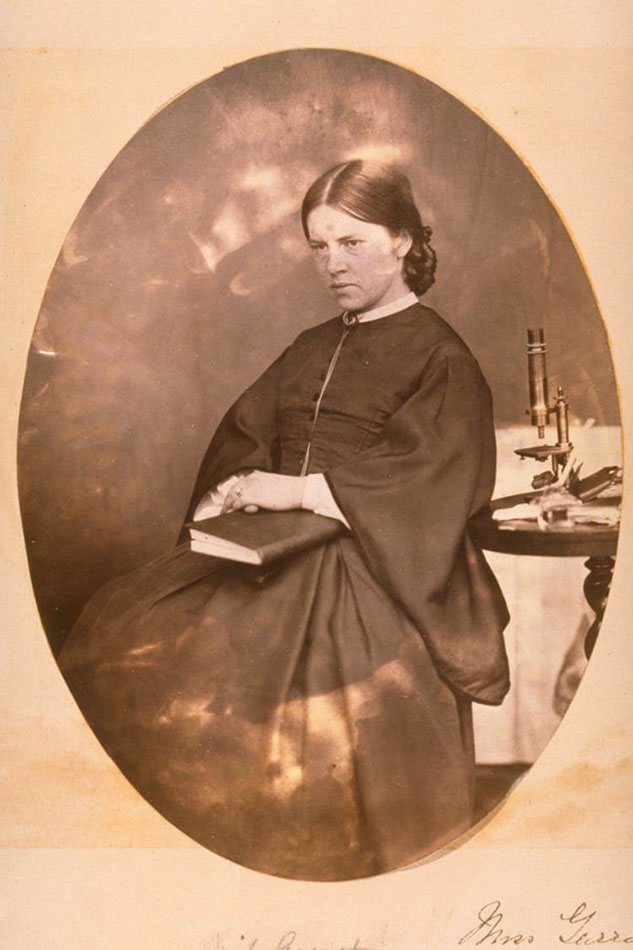
Her determination paved the way for other women, although in some instances her success in entering a previously all-male institution provoked it formally to exclude any women following her. As Elizabeth Garrett Anderson she was a pioneering physician, first Englishwoman to qualify as a physician and surgeon in Britain, co-founder of the first hospital staffed by women, first Dean of a British Medical School, first woman in Britain to be elected to a School Board – and in retirement at Aldeburgh in Suffolk, she became the first female mayor in England. She was sponsor and mentor to most of the British women who qualified in medicine in the last quarter of the 19th century. She returned to St Andrews in 1911 as an honoured guest at the University’s Quincentenary celebrations.
“the first thing women must learn is to dress like ladies and behave like gentlemen.”
Elizabeth Garrett Anderson
The first cohort of women to enter the University in 1892 graduated between 1895-97. Their graduations are listed in the University Calendars and they feature in the Biographical Register of the University of St Andrews.
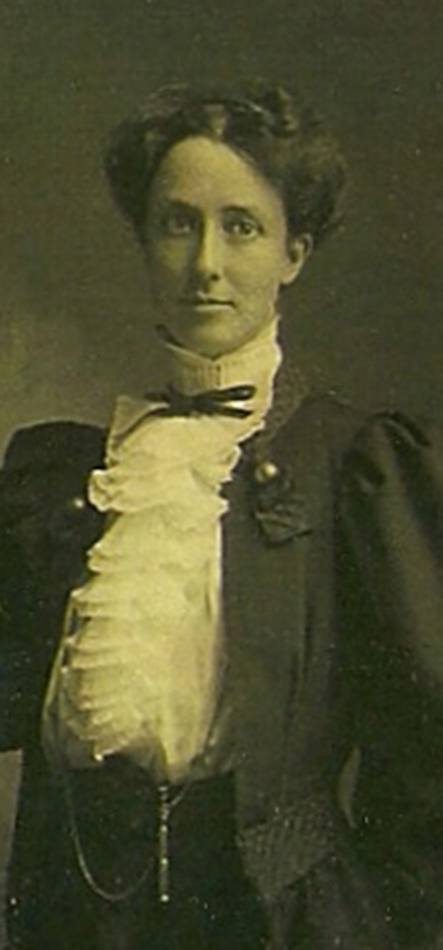
AGNES FORBES BLACKADDER (1875-1964) was the first female graduate, on 29 March 1895. She compressed her studies by taking subjects concurrently, allowing her to graduate ahead of her cohort. Blackadder went on to take an MBChB at Glasgow in 1898 and MD in 1901.
She married Dr Thomas D Savill in 1901 but was widowed in 1910. As Dr Agnes Savill, she achieved eminence through a distinguished medical career as a consultant dermatologist in London, one of the first women to be appointed consultant in a hospital which was not exclusively for women. She published papers on the forcible feeding of suffrage prisoners on hunger strike and played a central role as radiographer in the Scottish Women’s Hospital at Royaumont, France, during the 1914-18 war. She was still seeing patients into her 70s.
Agnes Blackadder’s cohort who graduated on 27 March 1896 were:
ELLA (HELEN) G. LUMSDEN (1874-1950), teacher and wife of an Aberdeen academic.
MARY ANN FYFE BATHIE (1875-1957) married a Surgeon Rear Admiral.
KATHERINE CHAMBERS (c.1873-1952) teacher in Edgbaston then married a civil servant and moved to India.
MARY JANE CHRISTIE (1875-1917) taught at Nelson High School and became a much-loved headmistress of the High Wycombe High School, 1901-17.
The women who graduated on 26 March 1897 included:
CHRISTIAN MARY BROWN (1878-1972) was daughter of a clothier from St Andrews, attended Madras College and became a teacher and University Lecturer in Manchester and Bingley.
KATHERINE CHRISTIE CAIRD (1876-1963), daughter of a Montrose bread van driver, became a teacher, surviving as Lady Superintendent of Perth Academy.
ANNIE LLOYD-EVANS (1874-1938) became a teacher, scholar of higher education, Principal of a number of teacher training colleges, and an influential member of the Teacher Training College Association.
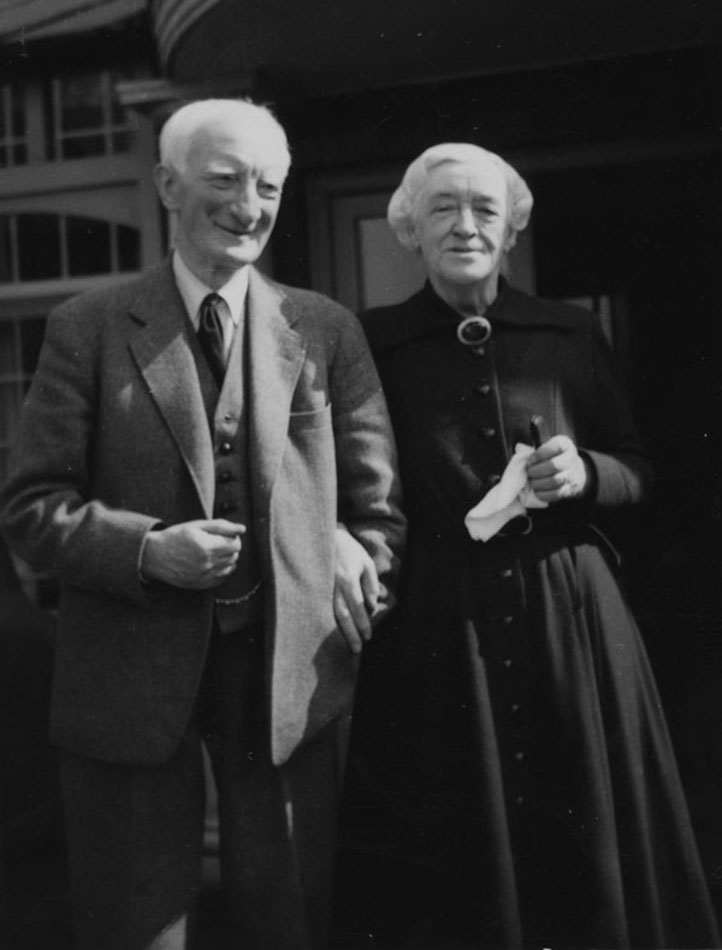
JESSY/JANET THOMSON PHILIP OBE (1876-1959) entered the Ministry of Munitions in July 1915 as a voluntary worker, and afterwards was attached to the staff. She then passed on to the Ministry of Food at its inception in the autumn of 1916, becoming Assistant Director for Bacon Distribution in September 1917. She was appointed an officer of the British Empire on New Year’s Day 1918.
She became Secretary and Acting Dean of the London School of Economics, 1919-38 where William Beveridge was Director, 1919-37 – they married in 1942.
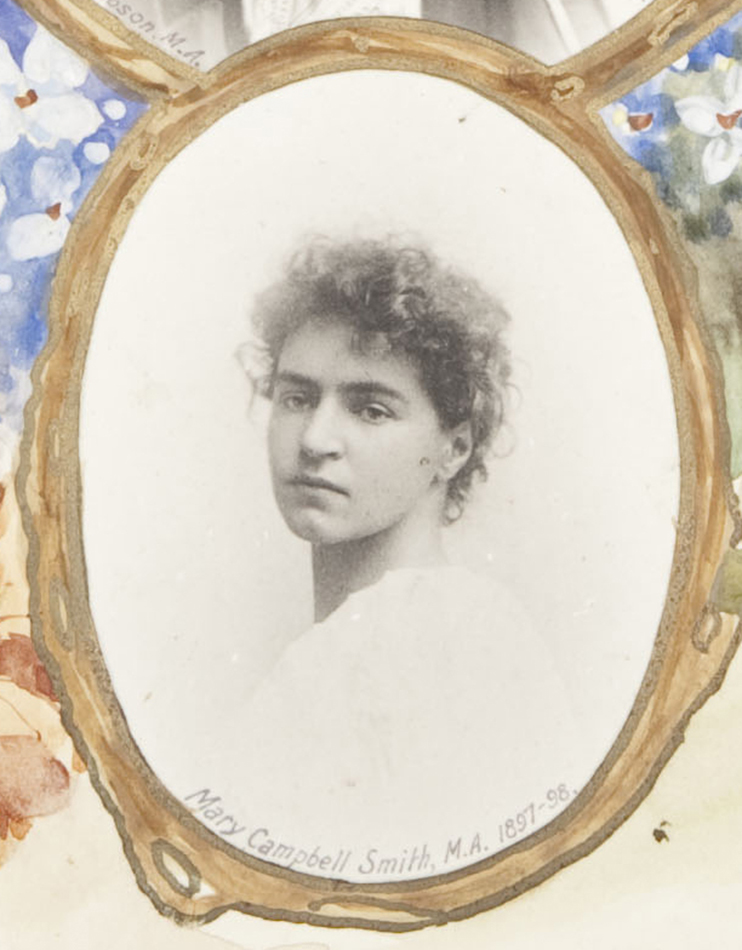
MARY CAMPBELL SMITH graduated MA on 1 April 1899 with 1st class honours in Mental Philosophy and 3rd class honours in Maths and Natural Philosophy (Physics). She had been Senior Student in the new University Hall. She served as Quartermaster of the Red Cross Auxiliary Hospital in Dundee from 1914-19 and worked as an academic in Germany.
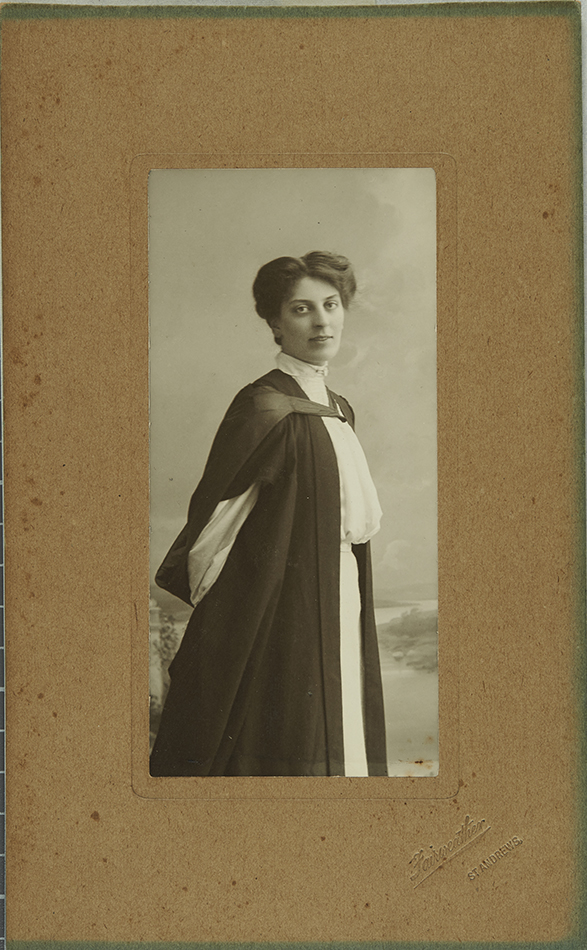
Strong family ties with the University are nowhere better exemplified than by the Campbells of Kirkcaldy, 8 sisters and 1 brother with at least one sibling attending St Andrews between 1898-1934, except for 1922/3. Third sister LIZZIE (MABEL) RENWICK CAMPBELL (1885-1939) graduated MA in 1906 and MBChB in 1909. She worked as anaesthetist and gynaecologist in Newcastle and Lecturer in the Medical family of Armstrong College there.
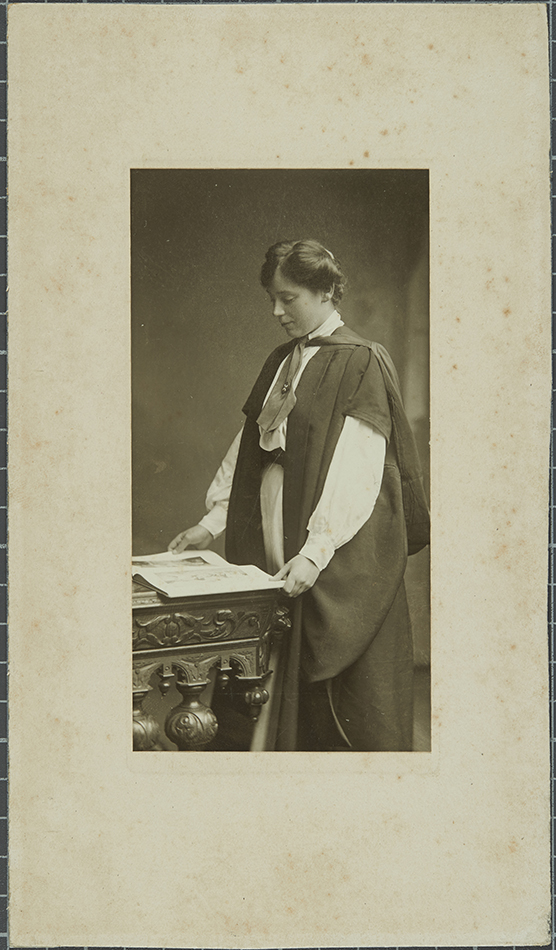
Next sister ADELINE HERBERT CAMPBELL (1887-1965) gained her MA in 1909 and MBChB in 1912. She served with the Scottish Women’s Hospital in Serbia under Dr Elsie Inglis and in France with the Women’s Auxiliary Army Corps at the American Hospital, Le Havre, then practiced in Edinburgh 1919-54.
The youngest sister ISHBEL GRACE MACNAUGHTON CAMPBELL (1905-1997), BSc 1926, became a research chemist, won a Carnegie Fellowship, studied at Cornell and returned to Scotland to teach at St Andrews, and colleges in Swanley, Bedford and Southampton, being Reader in Chemistry at the latter university by her retirement in 1971.
FAY WELDON (b. 1931) studied Economics and Politics at St Andrews but did not graduate until 1990 when she was awarded an LLD. She made her name as a journalist and advertising copy-writer before becoming a fulltime writer. She is Professor of Creative Writing at Bath Spa University and was made CBE in 2001 for services to literature.
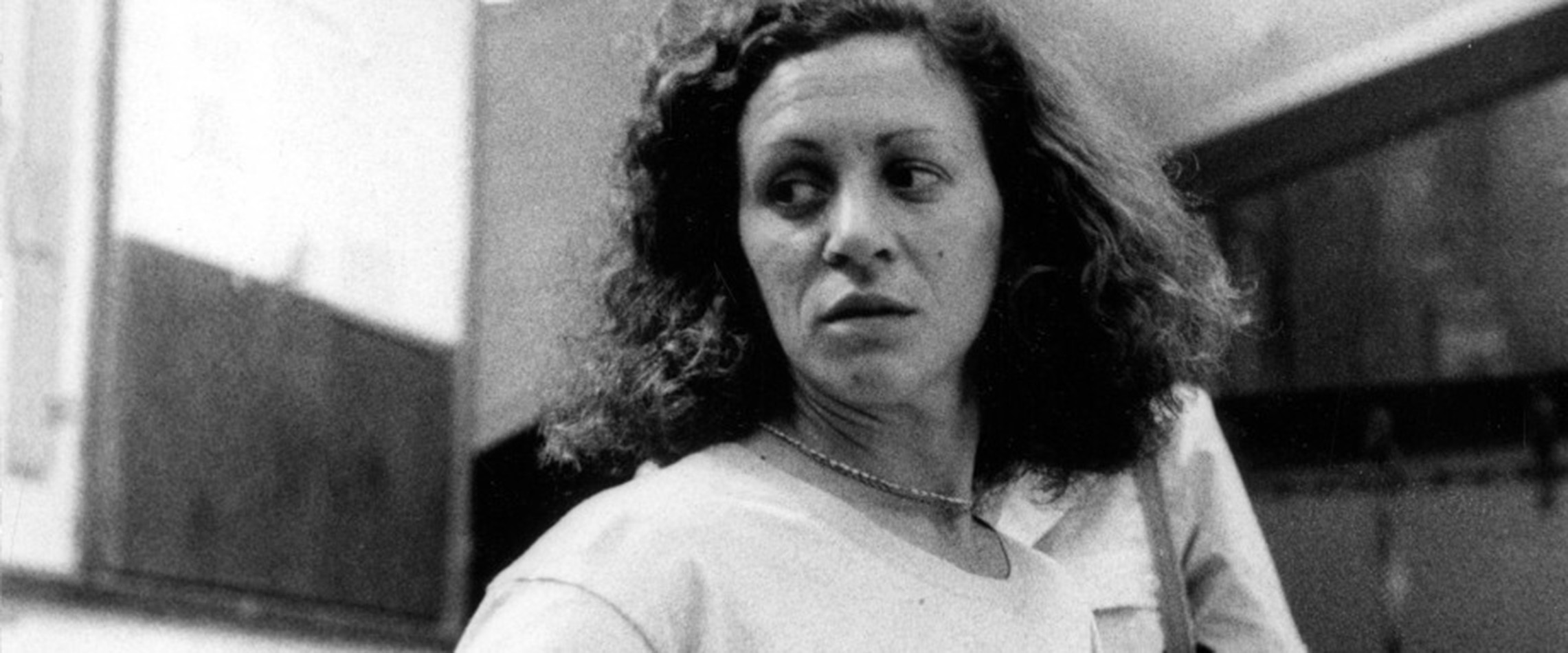
FRANKI RAFFLES (1955-94) graduated MA honours in Philosophy in 1977. While at University she was an active member of the Students’ Representative Council and the Women’s Liberation Group. She moved to the Isle of Lewis and took up photography, particularly of women at work and in their everyday lives. She travelled widely and her reputation grew, until her early death in 1994 at the age of 39, just as she was receiving wide public attention particularly through the ‘zero tolerance’ campaign. The Franki Raffles collection held by the University contains approximately 90,000 negatives, with manuscripts and prints. There is currently a collaborative exhibition of her work at Glasgow School of Art.
Here are some of the pioneering women who were first to hold their various roles in the University:
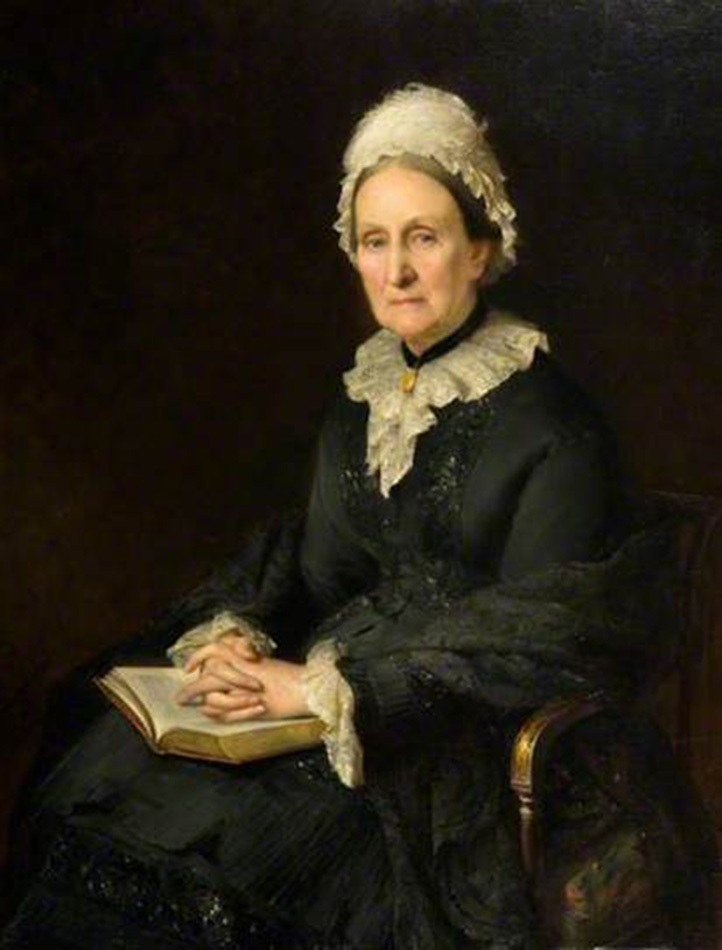
http://www.dundeewomenstrail.org.uk/womens-trail/mary-ann-baxter/
MARY ANN BAXTER (1801-1884) was main benefactor and co-founder of University College, Dundee. She promoted the education of both sexes and dictated that her College would teach a broad range of subjects, but not Divinity. UCD opened in 1883 and women were able to study from the start, and male students were allowed to matriculate at St Andrews from 1885. UCD was incorporated within the University in 1897. She is commemorated in Dundee’s Discovery Walk.
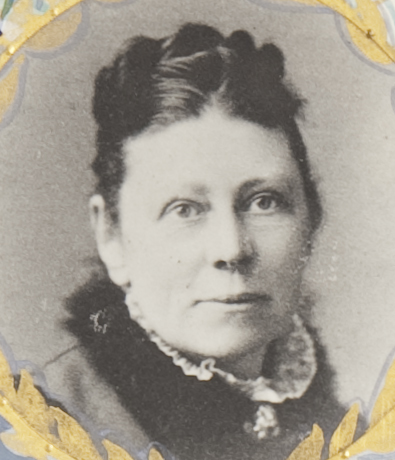
LOUISA INNES LUMSDEN (1840-1935), pioneer in women’s education, headmistress and suffragist. One of the first students of Girton College, Cambridge, she was leader of the ‘Girton Five’ or ‘Girton pioneers’. She was founding headmistress of St Leonards School, the first school for girls in Scotland modelled on English public schools. She left in 1882 to look after her invalid mother, travelling widely after her death and returning to St Andrews in 1895 as founder and first warden of University Hall, the first purpose-built hall of residence for women in Scotland.
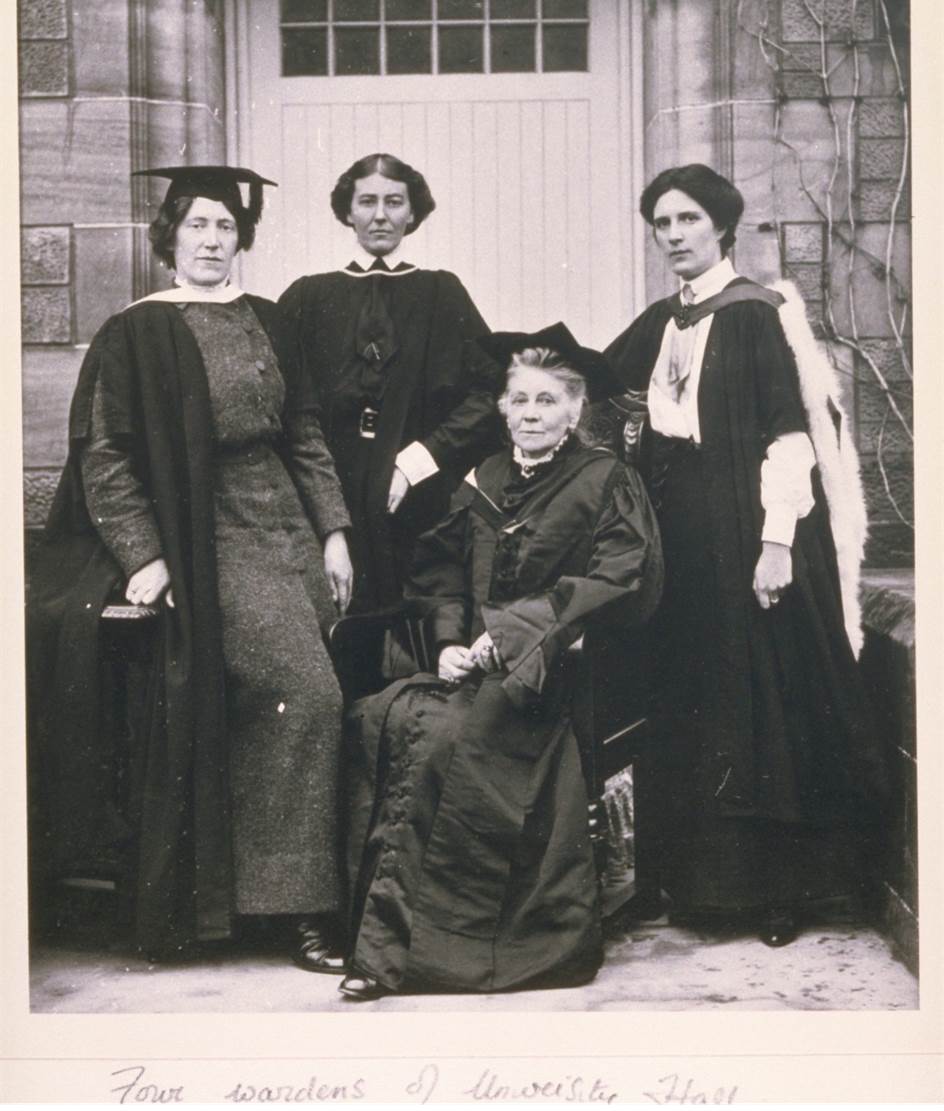
Her vision was for a ‘Scottish Girton’, where a woman had a better chance of meeting her full potential while at university by residing with other students who had the same goals of ‘self-development’. She met formidable opposition, and retired in 1900. She then travelled widely, settling in Aberdeen in 1908 where she became active in the suffragist campaign for women’s votes. She was awarded an LLD by the University in 1911 at the Quincentenary celebrations. Her robes were bought for her by former pupils from St Leonards. She chose to interpret the honorary degree as amends for the University’s past treatment. She was made a Dame of the British Empire for her services to education in 1925.
ALICE MARION UMPHERSTON (1863-1957) gained her profession qualifications of LRCPE, LRCSE and LFPSG in 1892. She was appointed as the first female lecturer in the University in 1896, with a remit to teach the women students Physiology. She later had the same role in the North Indian School of Medicine and practised as a doctor in medical missions in the Punjab.
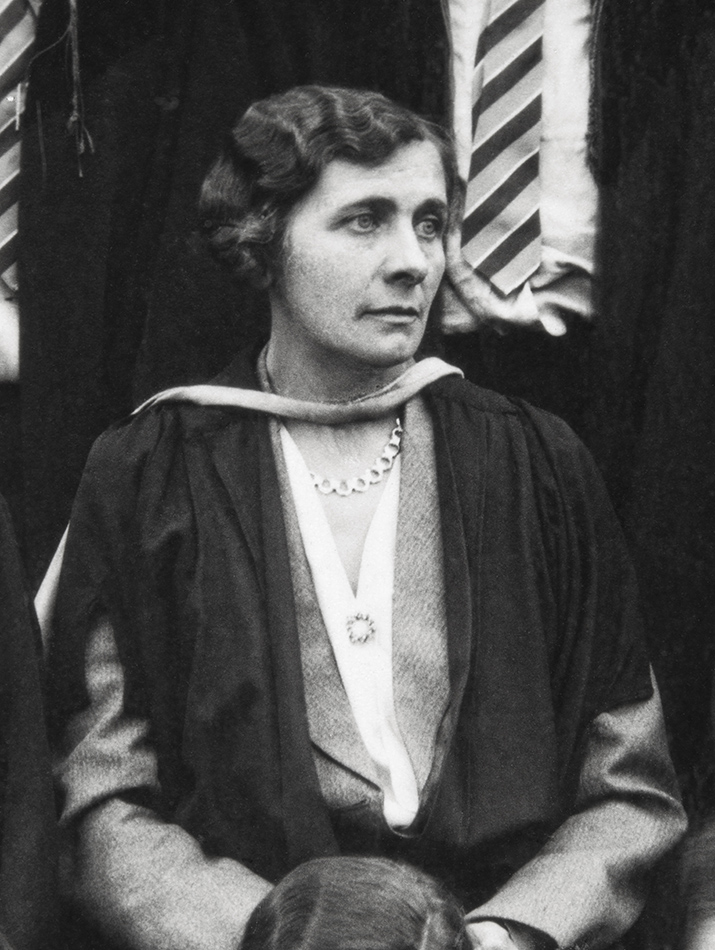
ETTIE STEWART STEELE (1891?-1983) gained her MA from St Andrews in 1912 and a BSc in 1914. She was the first female University Assistant, being appointed in Chemistry in 1916 and was the first candidate to submit a thesis for the degree of PhD, in 1919. She graduated with Dr Grace Cumming Leitch as the earliest PhDs in 1920.
Her research was carried out in the Chemical Research Laboratory under the direction of James C Irvine and took 19 terms (1914-19). She was the first female lecturer in Chemistry (1920) and was warden of Chattan House, later McIntosh Hall, 1930-59. She worked closely with Principal Irvine in both research and administration, acting as his secretary. In retirement she became ‘bursar of residences’. The School of Chemistry is naming a reading room after Dr Steele at the end of March.
MARGARET FAIRLIE (1891-1963) was the first female professor in Scotland, appointed to the Chair of Obstetrics and Gynaecology at University College Dundee, then part of the University of St Andrews, in 1940. She had been a student there herself from 1910, graduating MBChB in 1915 after which she held various medical posts before returning to Dundee in 1919 to run a consultant practice. She began teaching at Dundee Medical School in 1920 and joined the staff at Dundee Royal Infirmary.
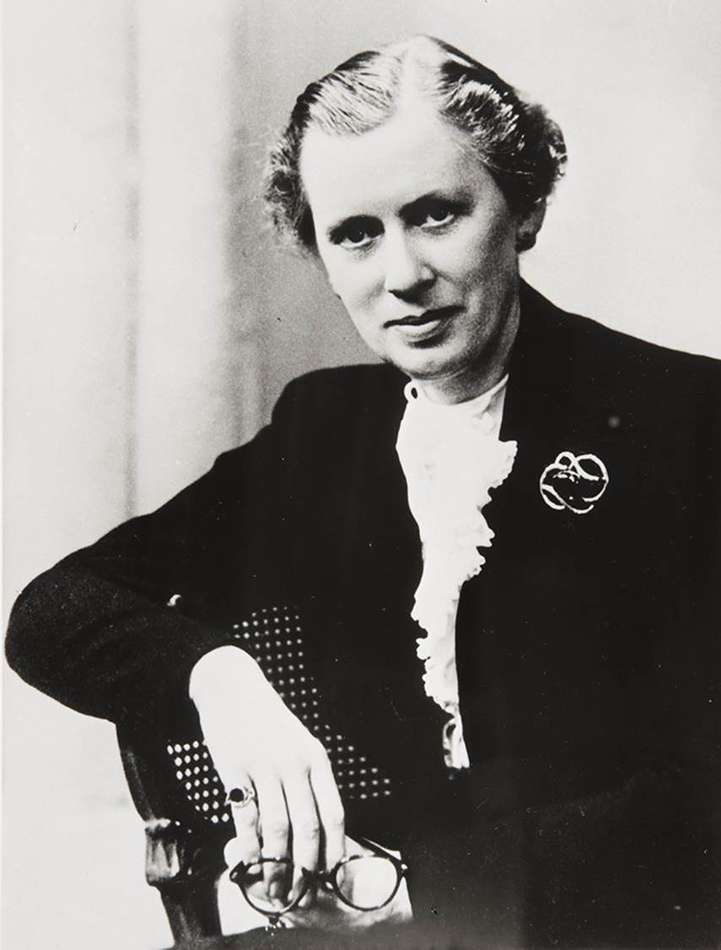
http://archives-records-artefacts.blogspot.co.uk/2011/08/notable-university-figures-3-professor.html
Known affectionately as ‘Madam’ by colleagues and students alike, Dr Fairlie pioneered the use of radium for gynaecology. She developed vaginal smear cytology for cancer diagnosis, worked to reduce infant mortality in Dundee and was instrumental in setting up the first ante-natal clinic in Dundee. She fought for four years as head of the Infirmary’s Obs and Gynae Department to become Professor at the University, and succeeded in 1940, remaining Scotland’s only female professor until her retirement in 1956. She is commemorated in Dundee’s Women’s Trail.
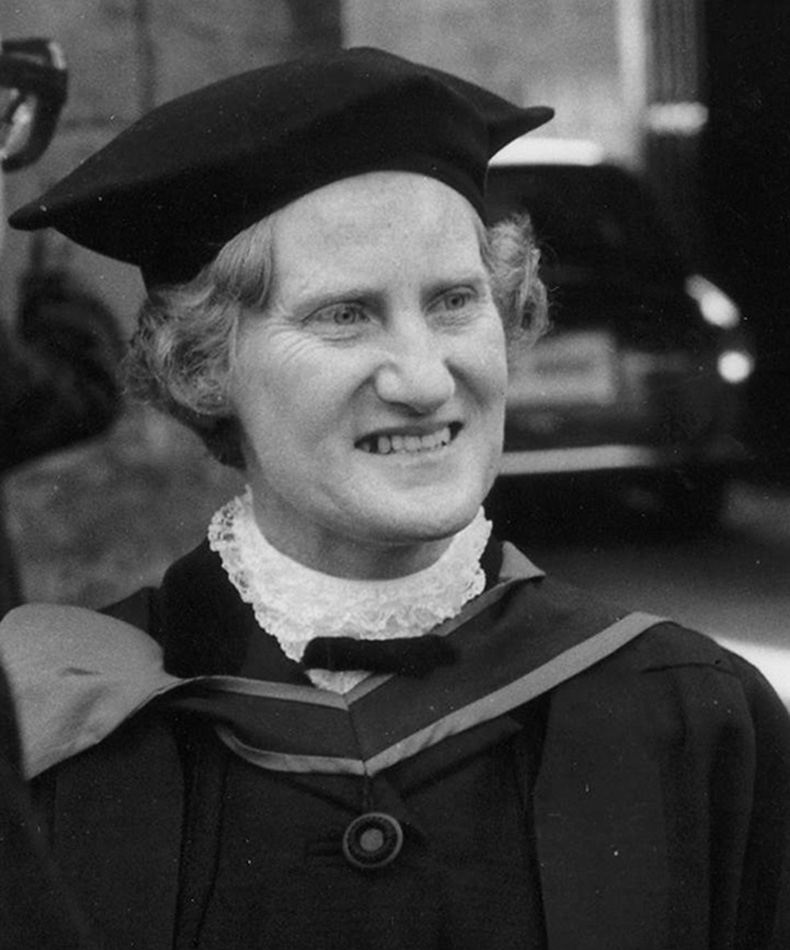
KATHLEEN (KAY) MACIVER (d. 2011) was a pioneer for women in senior administrative roles at the University. She joined the Department of Geography in 1953 as first female lecturer in the discipline and was first female chair of a department. In 1980 she became the first woman Dean of Arts in the history of the University and in 1984 became the first female Master of the United College, serving until 1988.
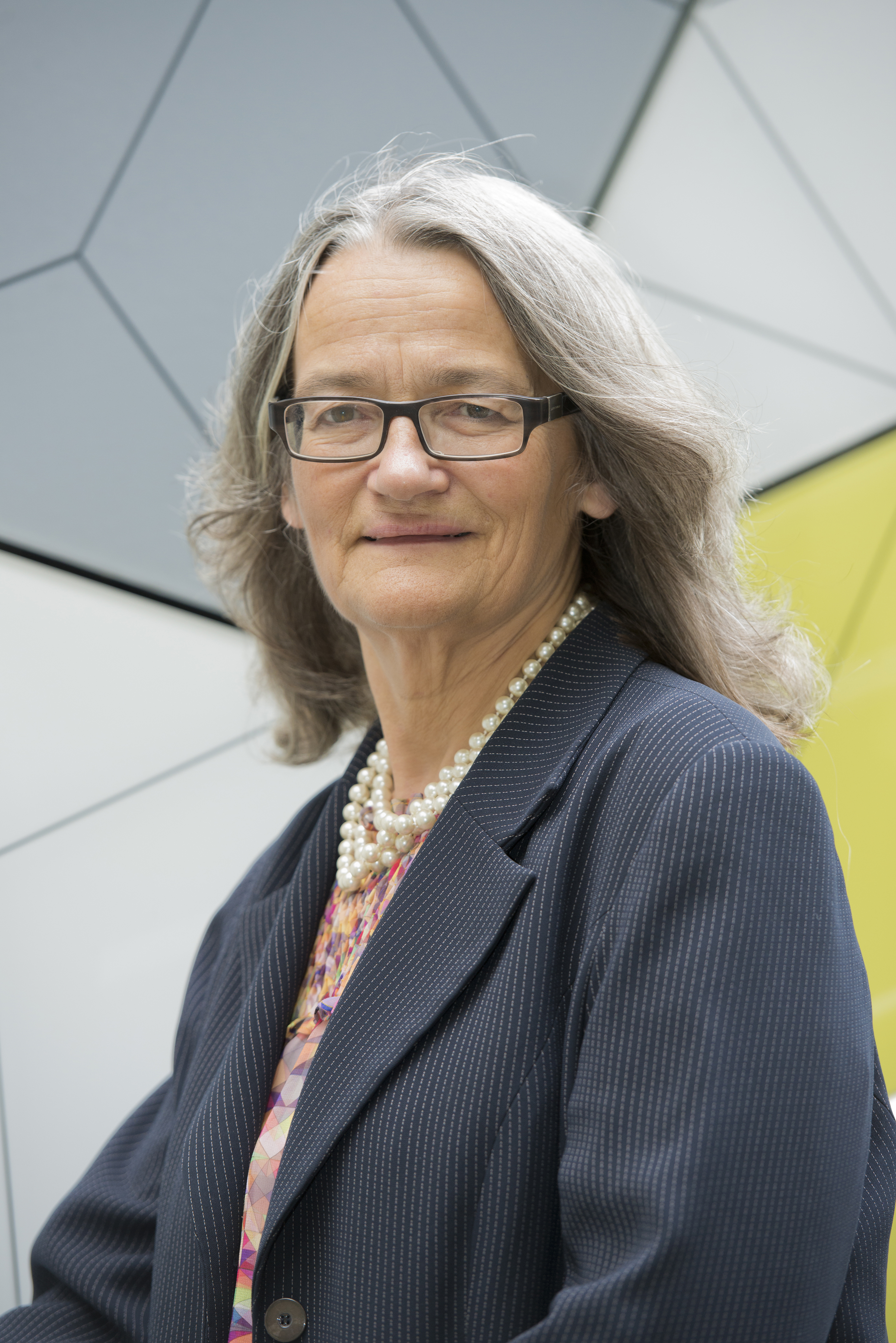
https://www.cs.ox.ac.uk/people/ursula.martin/
URSULA MARTIN was the first woman appointed to a Chair at the University of St Andrews in St Andrews. (Margaret Fairlie was an appointee of the University Court but to a chair in Dundee). By the time of Ursula Martin’s appointment to the Chair of Computational Science on 1 September 1992 the two universities were well established as separate institutions. Professor Marie Johnston was appointed to the Chair of Psychology on 1 October 1992.
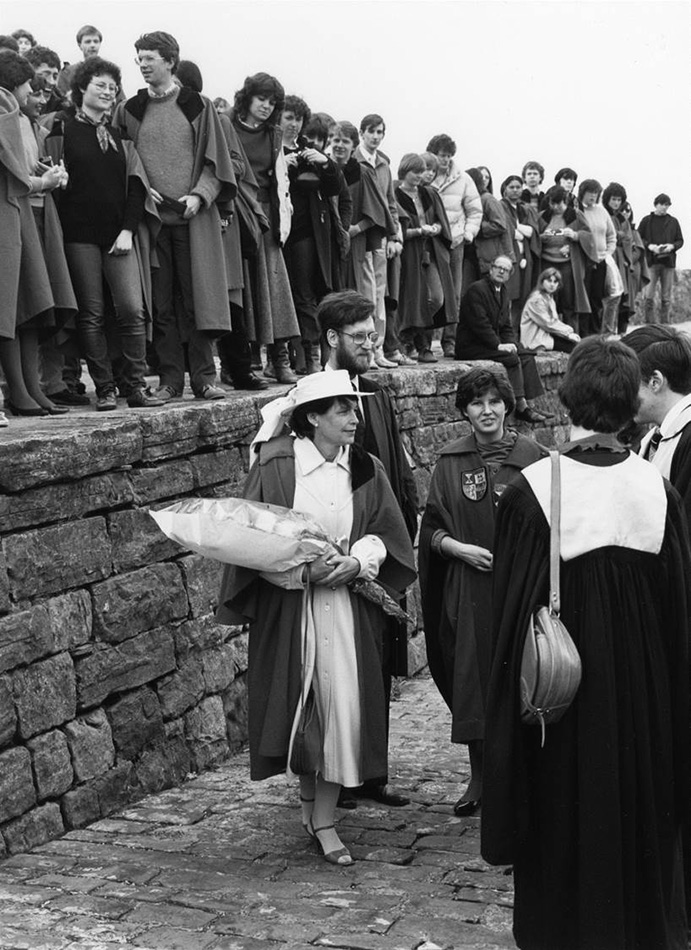
KATHERINE WHITEHORN, journalist and writer, was the first woman to be elected Rector of a Scottish University and St Andrews’ first female Lord Rector. She had been a columnist on The Observer for over 30 years when the students elected her unopposed in 1982.
“The easiest way for your children to learn about money is for you not to have any.”
Katherine Whitehorn
And finally, here are the first women whom the University has chosen to honour for their achievements:
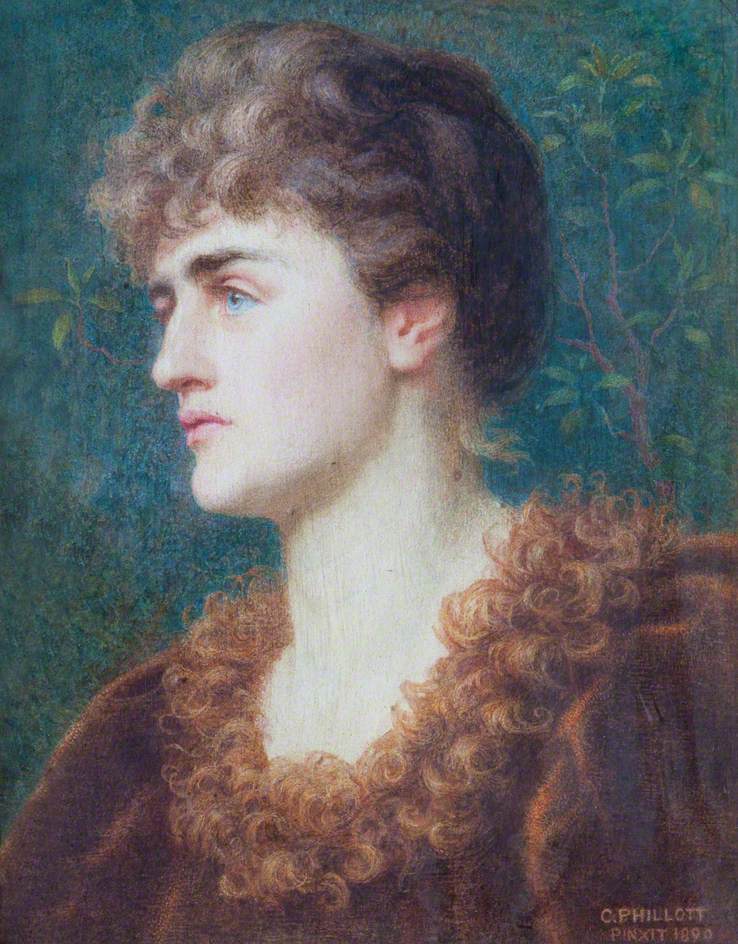
EUGENIE SELLARS (STRONG) (1860-1943) read for the Classics Tripos at Girton, Cambridge from 1879 but could not graduate. She taught at St Leonards School in St Andrews for a short time before making her name as an archaeologist and art historian; as an eminent classical scholar she was eventually Assistant Director of the British School at Rome. LLD 1897.
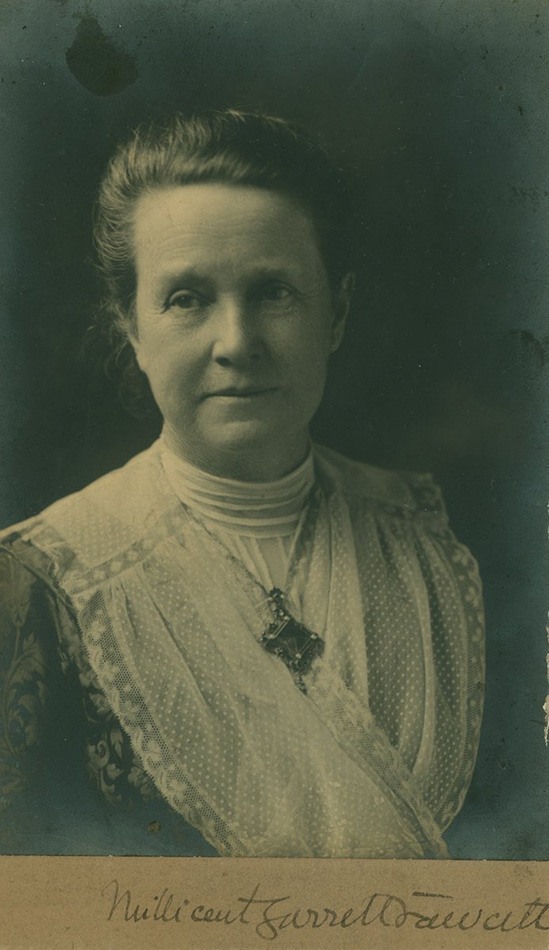
MILLICENT GARRETT FAWCETT (1847-1929), feminist intellectual, co-founder of Newnham College, Cambridge and leader of the Constitutional Women’s Suffrage Movement, was awarded an LLD in 1899 in recognition of her services to education. She was a campaigner for moral and social reform and advocated the law-abiding protest of suffragists, rather than the radical and violent displays of the Suffragettes. However the ODNB refers to ‘spectacular demonstrations and marches in which she took the lead, sometimes dressed in her doctoral robes’. She was a younger sister of Elizabeth Garrett.
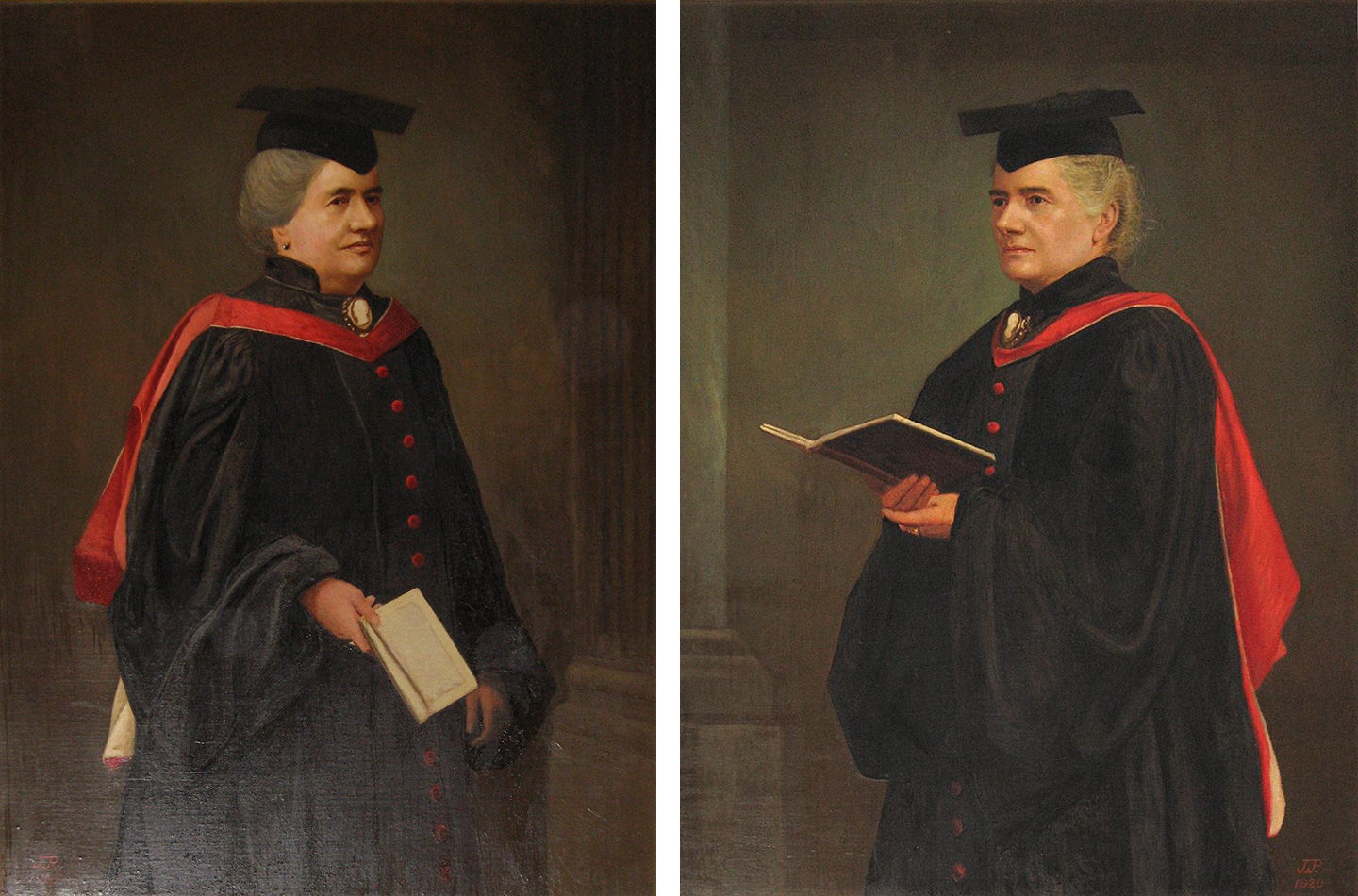
AGNES SMITH LEWIS and MARGARET DUNLOP GIBSON (1843-1926/1920) were twin sisters from Irvine, privately tutored and left very wealthy at the death of their father, married and widowed early. They lived together in Cambridge and excelled at languages, travelled widely especially in Egypt and Palestine, and produced many scholarly publications and translations. They travelled together to St Catherine’s Monastery on Mount Sinai where they were able, on repeated occasions, to access the library and catalogue manuscripts, many of which they photographed. They were recognised by the University for their scholarship and specialism in manuscript studies when they received their honorary degrees in 1901.
AGNES IRWIN (1841-1914), American educator and first Dean of Radcliffe College, 1894-1909, received an honorary degree in 1906, partly in commemoration of the 200th anniversary of the birth of her great-great-grandfather Benjamin Franklin.
ERSILIA CAETANI LOVATELLI (1840-1925), Italian art historian, archaeologist and academic, received her LLD in 1906. She researched and published on Ancient Rome and held salons for the intellectuals and artists of her day from 1870 to 1915.
ELIZABETH SANDERSON HALDANE (1862-1937), author, philosopher, suffragist and social welfare worker, was the first female justice of the peace in Scotland. She was awarded an LLD in 1906. She was manager of the Edinburgh Royal Infirmary from 1901, established the Voluntary Aid Detachment from 1908, sat on Royal Commissions and the General Nursing Council, and became a Governor of Birkbeck College and the London School of Economics.
MRS HELEN BOSANQUET (1860-1926) was a social theorist and social reformer, working for the Charity Organisation Society and on the 1909 Majority Report on the Poor Law. She became influential in social work training and received her LLD in 1909.
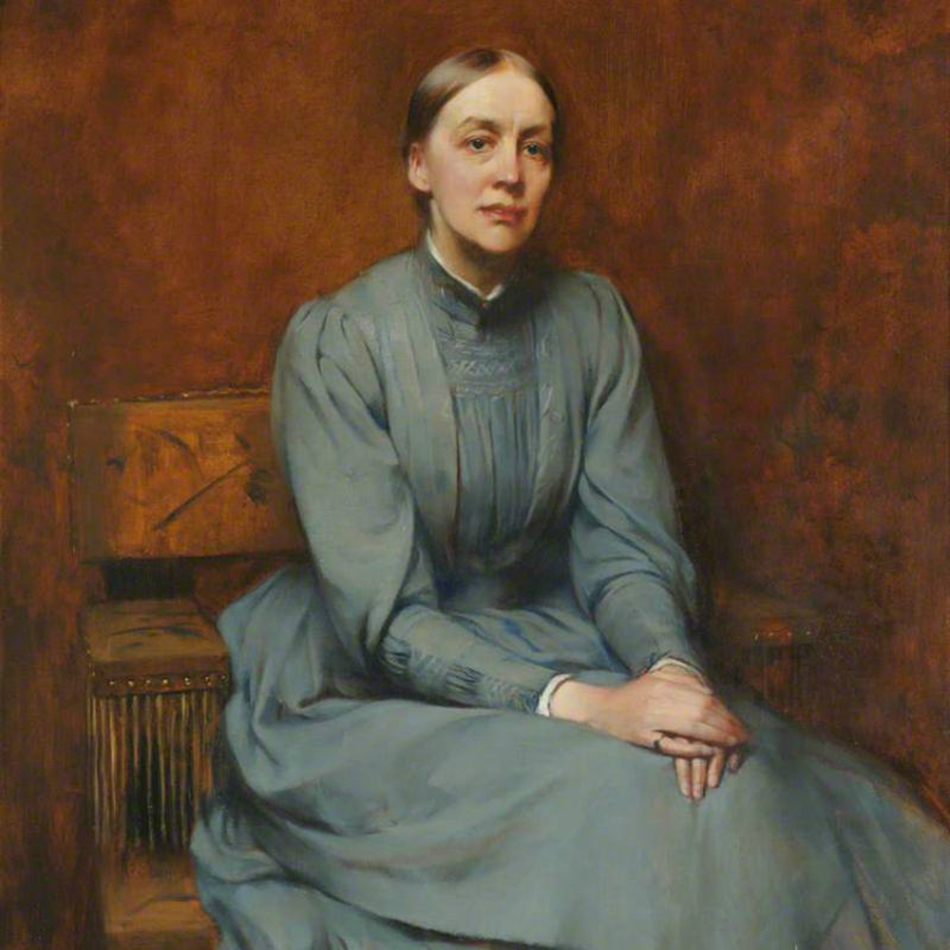
LOUISA INNES LUMSDEN, and ELEANOR MILDRED SIDGWICK (1845-1936) received LLDs at the Quincentenary celebrations in 1911, the only women so honoured out of over 100 recipients. Nora Sidgwick was sister of Arthur Balfour who became Prime Minister and Rector of the University. She was both an early student at, and later Principal of, Newnham College, Cambridge and married philosopher Henry Sidgwick, one of its founders. She was widely influential in the world of education and actively involved with the Society for Psychical Research.
Information taken from the Oxford Dictionary of National Biography, where entries are available.
Rachel Hart
Keeper of Manuscripts and Muniments
I first heard about Agnes Smith Lewis and Margaret Dunlop Gibson when I was taking a manuscript class as part of my history of art degree. Glad to learn more about their fellow accomplished and formidable St Andreans!
[…] London, a group formed in the 1850s which included Barbara Leigh Smith, Elizabeth Rayner Parkes, Elizabeth Garrett and Emily Davies. The Langham group officially formed a suffrage committee in October 1866 which […]
[…] first warden of the first hall of residence in Scotland for women, University Hall, was Louisa Lumsden (1840-1935). Lumsden was one of the Girton pioneers, an early student and later tutor at Girton […]
[…] celebration of International Women’s Day, here’s a follow up to last year’s post on Trailblazing Women and the recent series on the campaign for women’s […]
[…] grandmother, Mary Sturrock Blackadder, I was suprised and thrilled to discover the amazing woman Agnes Forbes Blackadder (her mother was Mary Sturrock) on the St. Andrews University website. Agnes, it turns out was the sister of my great grandfather, Thomas Blackadder, she was my […]
[…] over 50 years of age! The first woman to be appointed as a University lecturer, as highlighted in previous IWD’s posts, was Alice Marion Umpherston (1863-1957) – employed to teach Physiology to women students in […]
[…] Andrews graduate and one of 8 Campbell sisters to attend St Andrews, Dr Adeline Herbert Campbell (MA 1909, MBChB, 1912) also served with the SWH in Serbia under Inglis. Dr Campbell was decorated […]
This site is terrific. My own research indicates ties in well with your timeline and you might like to include it in some way: Oxford University records show that Gertrude Middleton from Leeds (1876-1942) was a boarder from 1892-94 at St Leonards Girl’s School in St Andrews, Scotland. At age 18, she was one of the first female students to be a candidate for matriculation (at a time when St Andrews women were barred from signing the matriculation roll) and remained at St Andrews to attend lectures in Classics as given by Professor Lewis Campbell, also Chairman of the Council of St Leonards School. From 1894 to 1896 at St Andrews, Campbell gave the Gifford Lectures, which were published in 1898.
Hi Michael, thanks for the information about Gertrude and her time at St Andrews.